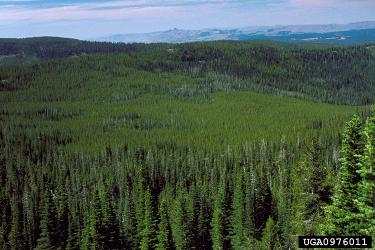Fire Regime 4
In Fire Regime 4, vegetation is destroyed by fire on a fairly frequent basis. This fire dynamic is central to the chaparral shrublands of California, lodgepole pine forests of the interior West, jack pine forests of the Lake States, and the Florida sand pine scrub. These ecosystems and many of the plants within them are truly fire-dependent. Many of their trees and other plants require fire to complete their life cycles, either to create conditions conducive to regeneration, to open their seed pods, or simply to prevent other species from overtopping them.
In these locations, a cycle begins with a large, severe fire that kills all aboveground plants. In the case of lodgepole and jack pine forests, this stimulates the release of seeds from serotinous cones that open when the trees die. In the case of chaparral, some species in this diverse vegetation release seeds from serotinous structures, some species germinate from seeds stored in the soil, and some species simply sprout again from below ground. In any case, the resulting stand initiates all at once, creating a single-aged forest/shrubland that covers the landscape and remains even-aged until the next major fire, which generally recurs within several decades, starting the cycle again.
Fire Regime 4 tends to occur where productivity is relatively low, thus keeping fuel production down, and where fire weather is infrequent enough that fire is not a constant presence, either because it is cooler, as in the subalpine lodgepole forests of the West, or because windstorms necessary to drive landscape-scale fire rarely occur in combination with an ignition source, as appears to be the case in Southern California chaparral. Where even-aged forests develop, the vegetation can support crown fire when very young, but if fire does not return too soon, the stand can grow into a relatively fire-resistant structure, with lower branches shaded out by the dense canopy and relatively little fuel on the forest floor, and remain in that condition for decades.
How can I get more tips?
It’s simple! Enter your email below.

